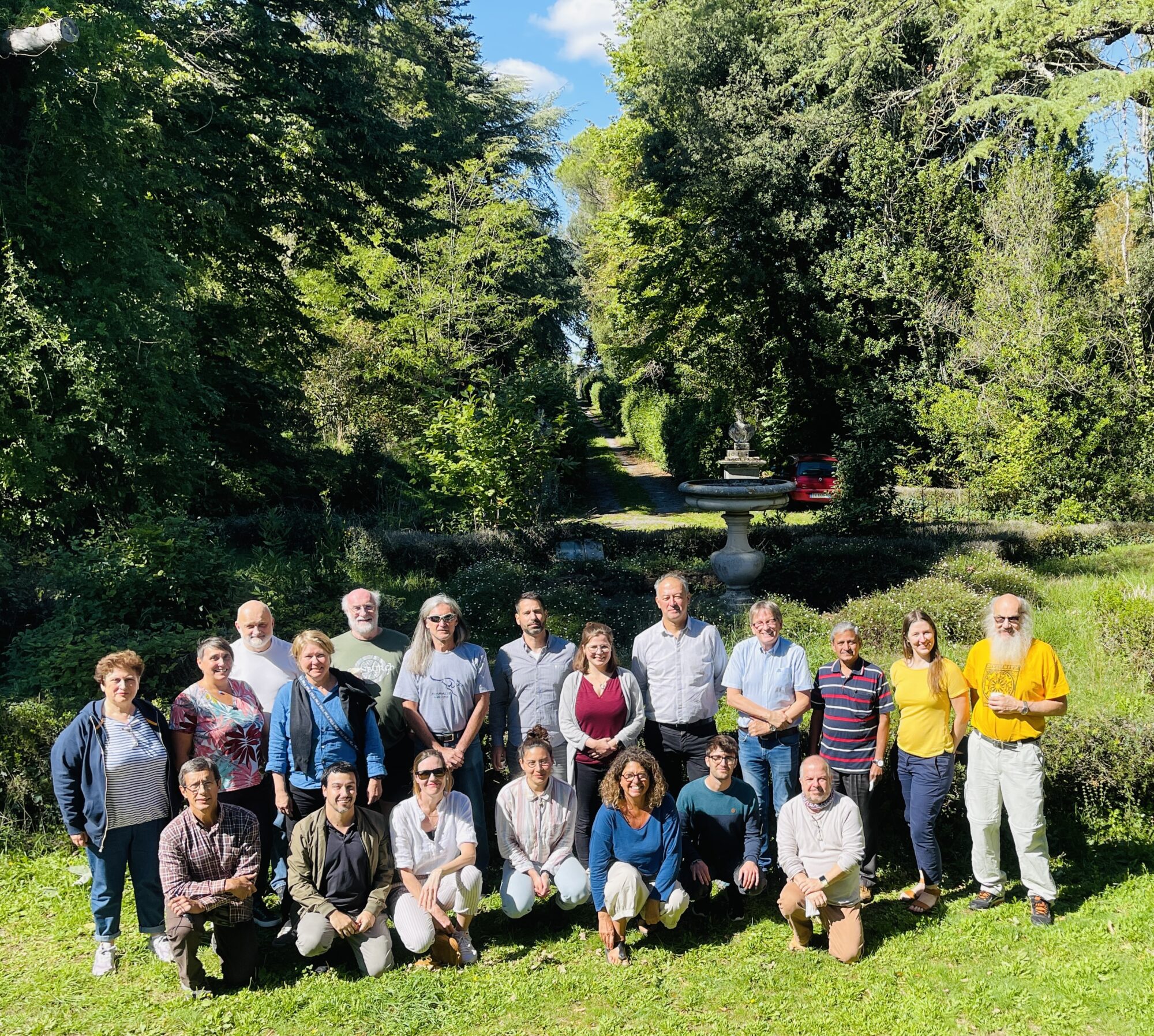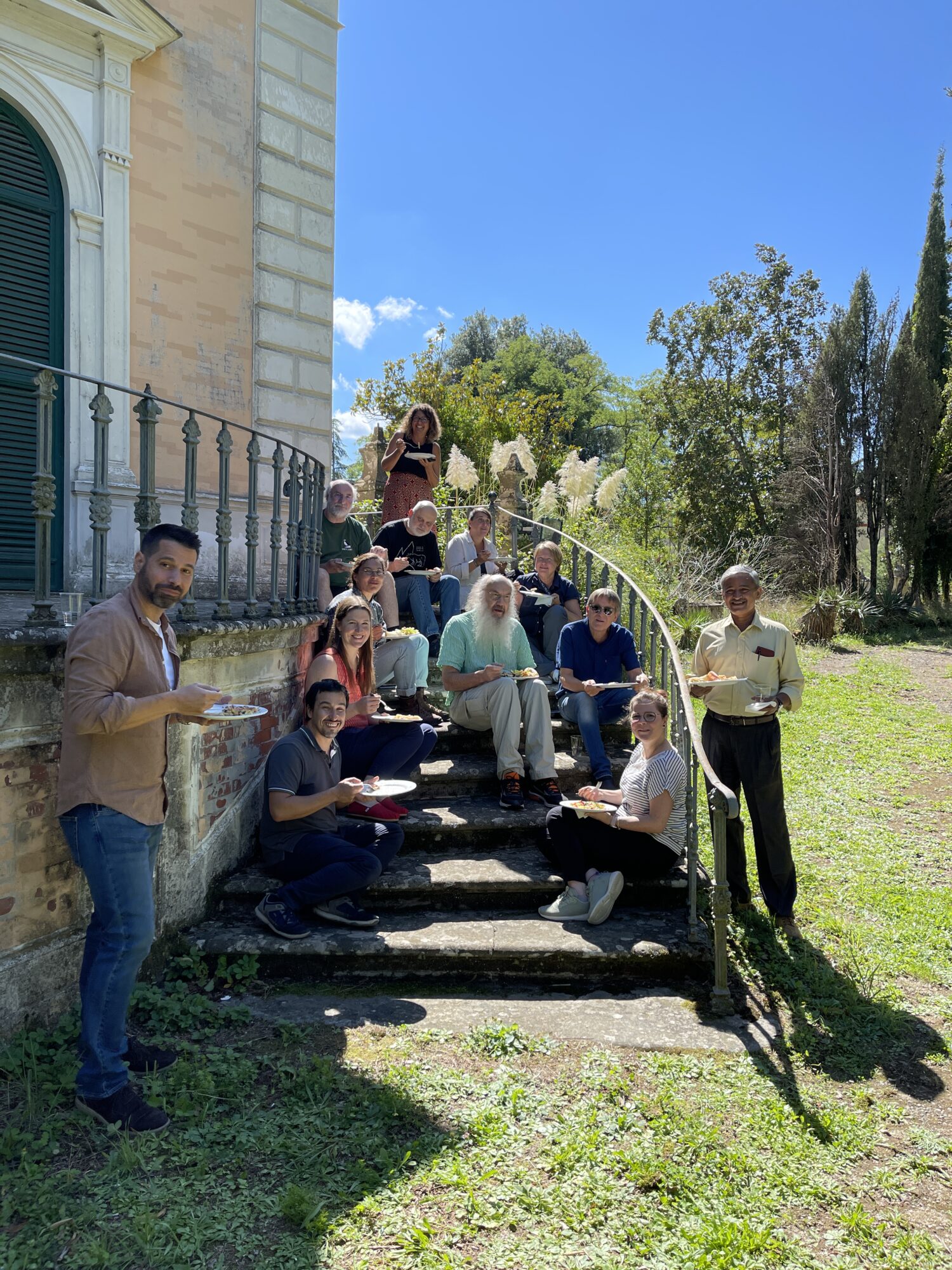Photo: Christina A. Pedersen, NPI
Cross disiplinary work on Nutrient Cycle in the Arctic focusing on Ny-Ålesund
Do you work on the Nutrient cycles in Ny-Ålesund/Kongsfjorden and have detailed data or knowledge regarding the in- and outflux of Nutrients to Kongsfjorden, or do you work with stable isotopes as an approach to study the Nutrients in the Arctic? – then we would like to get you involved in our common publications.
A summary from the Nutrient Cycle workshop in Orvieto September 2022, by Christina A. Pedersen, Norwegian Polar Institute
Background
To increase the collaborative work between the four flagships in Ny-Ålesund, NPI together with the flagship chairs in 2019 applied for a common project on Nutrient Cycle in the Arctic under the Svalbard Strategic Grant call. The proposal was in line with the call priorities and got funded for two years to arrange a range of activities with the aim to use the Nutrient cycle as a common subject that involves all spheres of the earth system.
The workshop
Finally, after almost two years of travel restrictions, in September 2022 there was time to meet in person to continue the discussions from an earlier meeting in Oslo, and a digital key-note seminar series. A three-day workshop was hosted by the Research Institute on Terrestrial Ecosystems of the National Research Council, at its headquarter in a stunning villa in Porano giving the opportunity to almost 30 participants from 8 countries to meet in this beautiful part of Italy. The venue was a perfect framwork for the scientist’s bold thoughts.


Several items were on the agenda during the three-days of workshop. Carlos Jiménez, University of Malaga, gave a very informative keynote presentation on Nutrient dynamics and related future challenges in Kongsfjorden, which set the stage for the rest of the days.
The first session dealt with how we can compare concepts, methods, and key processes of Nutrients across disciplines. The dialog in smaller groups proved to be useful for the participants understanding how to communicate between the different disciplines f.ex. when it comes to comparing numbers of inflow and outflow between the spheres. This was useful not only for this workshop in particular but also for future collaboration.
The second session was a seminar series on cryosphere-marine interaction and the fresh-water inputs to the marine system. Jack Kohler and the cryosphere research collegium gave interesting presentations regarding the various cryosphere Nutrient inputs to the marine system, including both observations and modelling work.
The third session was devoted to how we could follow up on these ideas with a common project and brave experiment. From the Norwegian side, the Research Council of Norway will announce a call on Svalbard in a Pan-Arctic Context. The participants were encouraged to think how the outcome of the workshop could kindle thinking towards creating interdisciplinary projects that would fit for example that call.
The second part of the workshop was devoted to dedicated writing-/discussion groups on two topics. These topics had been identified during the Oslo workshop to be of interest, and topics where the research groups should go together to write common per-review publications.
The first topic: Nitrogen Budget
The first publication is focusing on estimating the nutrient budget of Kongsfjorden under cold and warm scenarios. In detail we want to estimate the nitrogen sink/source role of Kongsfjorden and to compare cold and warm years to get insight into how the budget may be affected by warming trends. This requires getting flux estimates from/to the atmosphere, from the glacier rivers and from/to the ocean. Moreover, we want to include biotic contributions to these fluxes such as those from bird excretion, for example. We aim at extending the flux estimates roughly from 2010 until present.
We have already identified some individuals that will be responsible for some of the budget components, but we are interested to engage more researchers that have something to contribute with.
The paper will have a data-based component and a modeling-based component. The model is a 3D coupled physical-biogeochemical model. Both approaches use the same atmosphere and river “end-members” but the budget computation is quite different. The idea is that the two different approaches may provide some sort of cross-validation.
Pedro Duarte from Norwegian Polar Institute is leading this publication process. Please contact him if you have something to contribute with.
The same group of scientists is also considering to submit a project proposal on the same topic to the Research Council of Norway call on Svalbard in a pan-Arctic context.
The second topic: using stable isotope approach to study the Nutrient cycle in the Arctic.
The stable isotope approach is based on the fact that the stable isotope composition in living organisms (or components of them) is the result of the physical and biochemical isotope fractionations and thereby carries information both about the environment and the metabolic processes in such living organisms.
Although the use of stable isotopes is known, a complete overview of what has been achieved in Arctic ecosystem studies is missing. The group is planning to address this in a common peer review publication.
The publication will include the definition of the physical, chemical and biochemical processes involving at least, C and N in an Arctic ecosystem, by defining for each “compartment or sphere” the main input, internal and output processes involving Nutrients. The publication will also include studies that use stable isotopes to link the different spheres, and scientific gaps to improve knowledge of the Arctic (in particular, Svalbard and Ny-Ålesund) ecosystem in particular in relation to future climate change.
Angela Augusti from the Research Institute on Terrestrial Ecosystems of the National Research Council, which also is the chair of the Ny-Ålesund Terrestrial Ecosystems Flagship, is leading the publication process. Please contact her if you have something to contribute with.


Did you find what you were looking for?